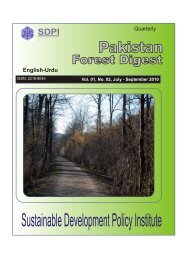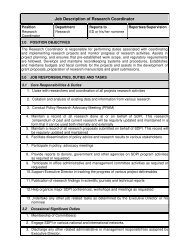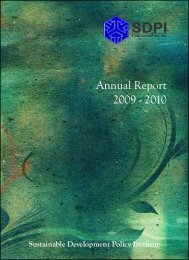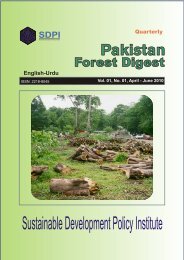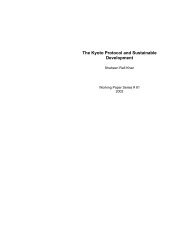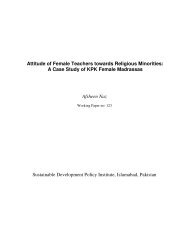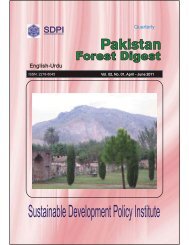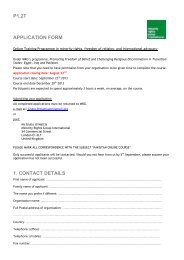Corporate Social Responsibility - Sustainable Development Policy ...
Corporate Social Responsibility - Sustainable Development Policy ...
Corporate Social Responsibility - Sustainable Development Policy ...
- No tags were found...
Create successful ePaper yourself
Turn your PDF publications into a flip-book with our unique Google optimized e-Paper software.
Studying the Sugar Production Process in Pakistanpercent of global freshwater abstractions are for the purpose of irrigation henceit may be stated that agriculture is the largest consumer of water worldwide.Irrigation projects are not planned with consideration on environmental or socialneeds often resulting in damage to the downstream ecosystems and livelihoodsof communities that rely on fisheries.The release of waste materials from the sugar mills and the processing of the byproductssuch as molasses are proven to be harmful for the species of thefreshwater, diminishing the biodiversity. About 100 years ago, the rare BlindRiver Dolphin (Platanista minor) was found throughout the Indus and its branchesit now exists in six totally isolated sub-populations.Being a deep-rooted crop, which remains in the soil all year round, a sugarcanecrop is able to extract soil water to depths below one meter. At times the crop canaffects river flows as well, it intercepts the rainwater from the catchment intorivers and taps into ground water resources.It should be communicated to growers that it is important when determining thebest irrigation system to take into consideration the soil type, climate, farmmanagement and affordability. The chief irrigation systems available are in thepresent technology include surface (flood / furrow), overhead sprinklers (dragline / centre-pivot) and drip / trickle techniques.While drip and trickle techniques are likely to be the most water-use efficient, thetechnique requires a considerable financial investment. On the other hand surfacetechniques are found to be the least efficient but are cheap in terms of cost as theydo not require farm machinery. In most areas only 30-35 percent of the waterreaches the crop while the excess is lost from irrigation channels by evaporationand through runoff from the field. Due to poor irrigation management a largeamount of water results in runoff containing sediment, pesticides and nutrients.Additionally, water standing in fields can enhance the incidence of water-borneparasitic infections such as Bilharzia (schistosomiasis).To counter the high cost aspect of drip techniques it is found that low-cost dripsystems are available for small-holders moreover it can be assured that microcreditis available for purchase of the equipment and sufficient ongoing technicalsupport. Irrigation scheduling, including the use of tensiometres to monitor soilmoisture, and tail-water recycling (where water-runoff from field is collectedand reused for irrigation) are also ways of improving irrigation management.y 49


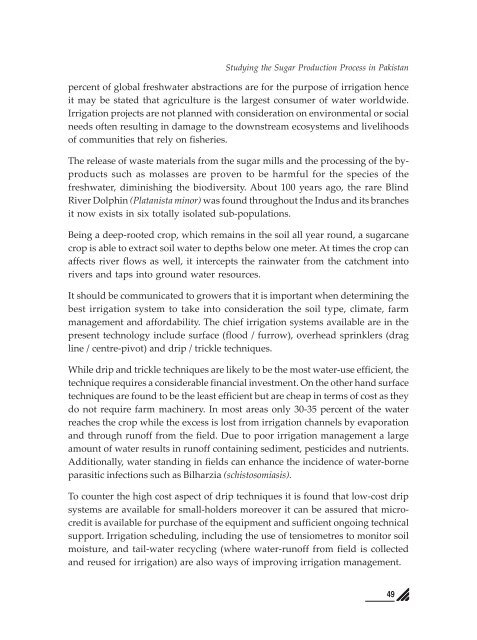
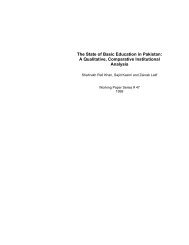
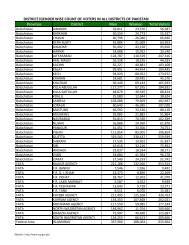
![(October - December, 2010) [13th SDC Special Bulletin]](https://img.yumpu.com/50118608/1/184x260/october-december-2010-13th-sdc-special-bulletin.jpg?quality=85)
